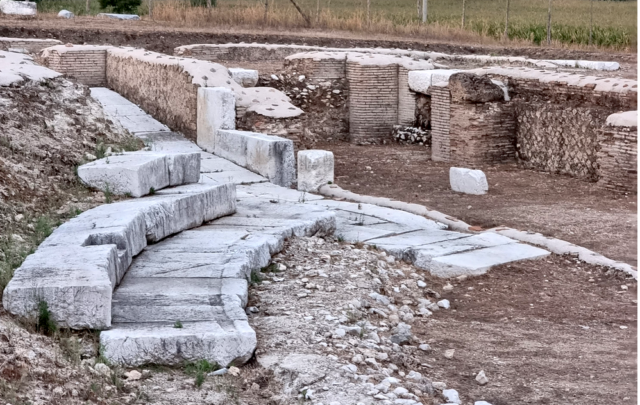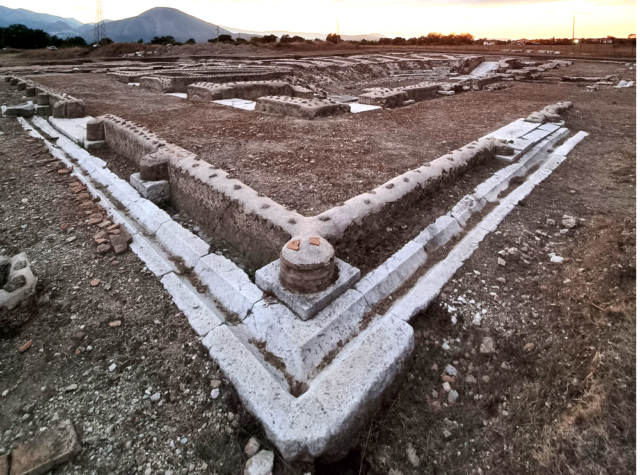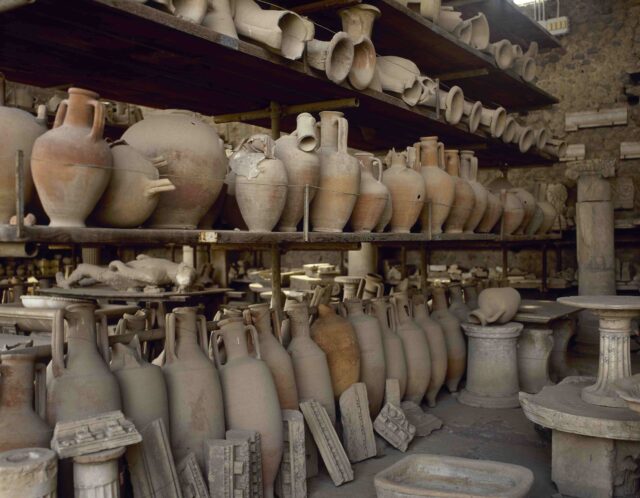After over a decade of research, archaeologists and researchers have discovered that contrary to original beliefs, one Roman Empire-era town survived much longer than estimated. In fact, despite the decline of the empire, it continued to thrive as a community. This discovery has historians rethinking the stability of isolated Roman towns during the fall of the Roman Empire, changing our understanding of history as we know it.
Interamna Lirenas

Located in central Italy’s Lazio region, Interamna Lirenas was previously believed to have fallen, like many other obscure Roman towns, into decline and to have gradually disappeared with the political and economic turmoil experienced in the Roman Empire during the second and third centuries AD. However, new excavations have proven that this town was far more resilient than previously believed. It survived for around 300 years longer than was originally estimated.
“We started with a site so unpromising that no one had ever tried to excavate it,” said Alessandro Launaro, the study’s author and Interamna Lirenas Project lead at the University of Cambridge’s Classics Faculty. “That’s very rare in Italy.” He continued, “There was nothing on the surface, no visible evidence of buildings, just bits of broken pottery. But what we discovered wasn’t a backwater, far from it. We found a thriving town adapting to every challenge thrown at it for 900 years.”
How the study was conducted

A team of archaeologists surveyed roughly 60 acres of what was comprised of mostly open fields using magnetic and ground-penetrating radar. Following this, they conducted a series of targeted excavations to uncover precise locations within the former ancient town. “We’re not saying that this town was special, it’s far more exciting than that,” Launaro explained. “We think many other average Roman towns in Italy were just as resilient. It’s just that archaeologists have only recently begun to apply the right techniques and approaches to see this.”
Their work began long ago and took 13 years to complete. What started out as a project to track an average Roman Empire-era town’s history over the course of many centuries turned into a remarkable discovery that changed the history of the fall of the Roman Empire.
The proof is in the pottery

One of the main ways the archaeological team was able to conclude that Interamna Lirenas thrived well beyond when it was first believed to have fallen was by studying the town’s pottery. By analyzing the common pottery of the average resident rather than the impressive imported pottery owned by some, the team was able to map the location and times of citizen movement in the region.
Housing around 2,000 residents, the people of Interamna Lirenas were making their own pottery instead of importing it from elsewhere. This was how researchers were able to determine that the town was able to avoid decline until the later part of the third century. “Based on the relative lack of imported pottery, archeologists have assumed that Interamna Lirenas was a declining backwater. We now know that wasn’t the case,” Laurano said.
Evidence in the infrastructure as well
Beyond its pottery, the town’s infrastructure has served as evidence of the longevity of Interamna Lirenas as well. Situated along the River Liri, the town likely served as a river port which would’ve helped to maintain trade in the area. A large warehouse measuring 131 feet by 39 feet was discovered on the site, probably used to hold tradable goods. “River ports didn’t just need warehouses,” Launaro explained. “People spent a lot of time working and resting in the vicinity, so they needed all kinds of amenities, just like the ones we found here.”
Researchers also discovered a roofed theater large enough to seat 1,500 visitors. “The fact that this town went for a roofed theater, such a refined building, does not fit with a backwater in decline. This theater was a major status symbol. It displayed the town’s wealth, power, and ambition,” Laurano said. In fact, the theater was growing rather than declining. The team found evidence of a wealthy donor funding what was likely to be an improvement to the theater.
Three bath house complexes and their continued upkeep past the decline of the empire strengthen the belief that the town thrived far longer than originally believed. As well, the excavation revealed 19 courtyard buildings that may have served as markets, guild houses, apartments, or even more warehouses, suggesting a lasting, thriving community in Interamna Lirenas.
Read more: Archaeologists Discover 2,000-Year-Old Home That May Have Belonged to Pliny the Elder
In the end, the town is believed to have been abandoned, as there was no evidence of a forced evacuation of the residents. However, this new understanding of the late Roman Empire town has changed how we understand the realities of life in the declining empire.
